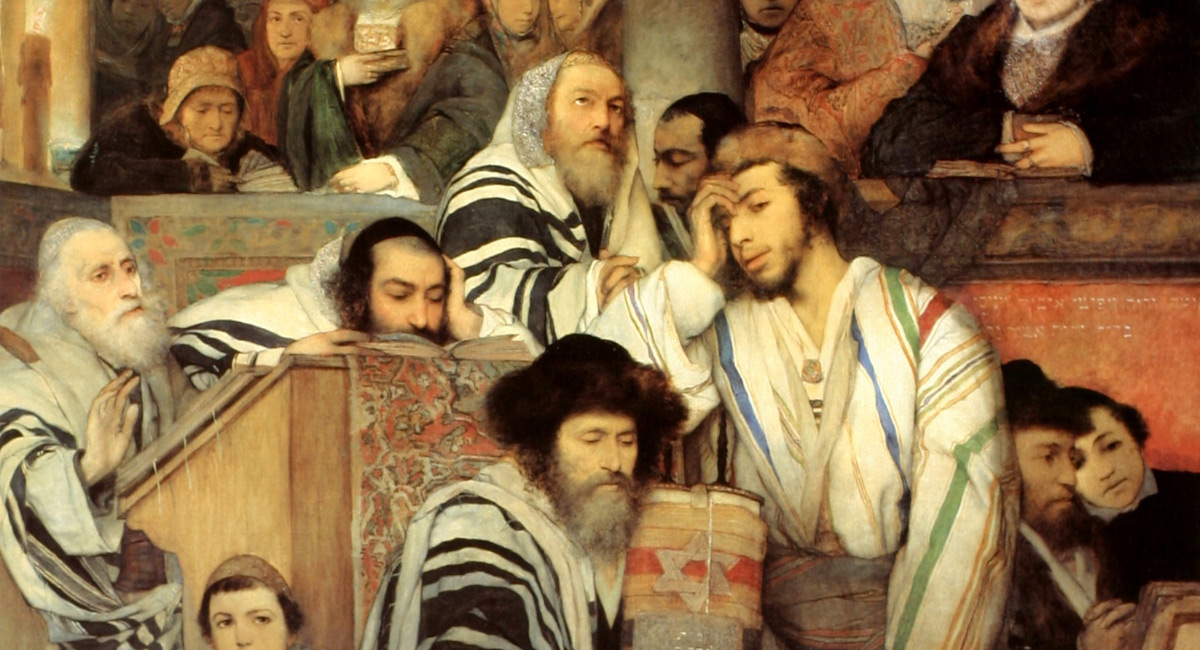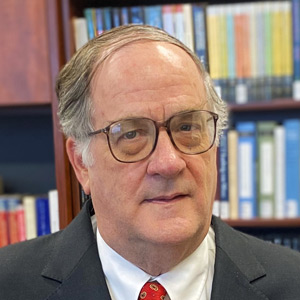Part one of four of the series “The Crisis in Civil Rights: Recommended Readings on Race, Police, and the Welfare State.”
If you can read just one item on this list, then make it Why the Germans? Why the Jews?: Envy, Race Hatred, and the Prehistory of the Holocaust, by Götz Aly. If you can read only two, make your second choice “The Socialist Calumny Against the Jews,” by Ludwig von Mises, from his Omnipotent Government.
Affaire Dreyfus: avant J’accuse...!, il y a eu... Le Figaro, by Guillaume Perrault. FigaroVox, November 13, 2019.
Guillaume Perrault, the editor in chief of FigaroVox and of the pages of Débats du Figaro, discusses the role of the classical liberal newspaper Le Figaro in the 1890s in denouncing anti-Semitism and defending the innocence of Captain Alfred Dreyfus.
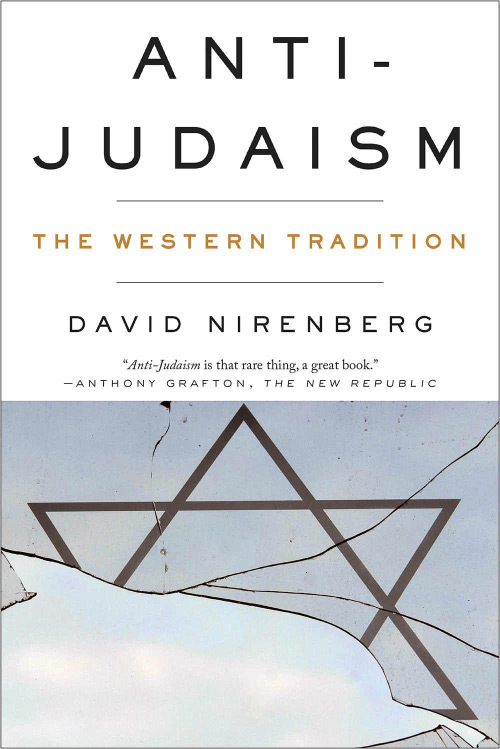 Anti-Judaism: The Western Tradition, by David Nirenberg. W. W. Norton & Company, 2014.
Anti-Judaism: The Western Tradition, by David Nirenberg. W. W. Norton & Company, 2014.
The story of the long history of anti-Semitism in Western thought. David Gordon calls this work, “The best survey of the subject.”
The Anti-Semitic Tradition in Modern Socialism, by Edmund Silberner. Inaugural lecture delivered at the Hebrew University in Jerusalem, 1953.
Examines anti-Semitism in socialist theory and political movements in England, France, Germany, and other nations. Most socialist theorists identified capitalism with Jews. Discusses, among others, Charles Fourier, Ferdinand Lassalle, Karl Marx, Friedrich Engels, and Jean Jaurès.
“Anti-Semitism and Progressive Era Social Science: The Case of John R. Commons,” by Luca Fiorito and Cosma Orsi. Journal of the History of Economic Thought, vol. 38, no. 1 (March 2016), pp. 55-80. Download PDF
Fiorito and Orsi write, “Commons came to see the sweatshop as reflective of some distinct ‘racial’ characteristics of immigrants. Commons’ targets were the Eastern European Jews—the group who had virtually monopolized the garment industry and the sweatshops. In his report Commons explained that Jews are physically unfit for manual labor and agriculture, while their original nature is too “individualistic” for the discipline of the modern American factory.... Commons even blamed Jews [for a] supposed racial inclination to speculation and trade.... Jews were seen as exceedingly ambitious and always eager to rise to the position of employer....
“Commons in fact regarded the sweatshop as the center of a rising immigrant economy, threatening to undermine not only the wages and the well-being of ‘American’ workers, but also the stability and efficacy of the union movement. Accordingly, Commons argued that the Jew’s individualistic and uncooperative (but also abstract and metaphysical) nature would weaken the development of permanent unions....
“[I]n his published writings Commons joined the bulk of Progressive social scientists in defining Jews as a race and in stereotyping their behavior in terms of innate traits and inherited propensities.... It is not difficult ... to detect in Commons’ depiction of the individualistic, undisciplined, speculative, and metaphysical Jew traces of three ... historically recurrent anti-Semitic images, ... namely: 1) the Jew as a betrayer and a manipulator (the Judas image); 2) the Jew as an exploiter personifying usury or modern capitalism (the Shylock image); 3) the Jew as a skeptic, an iconoclast, a revolutionary, undermining faith and authority....”
“Antiracism, Anti-Semitism, and the False Problem of Jewish Success,” by Daniel Friedman, Quillette, Oct. 25, 2020.
Friedman writes, “The belief that racial or ethnic groups ought to pursue a shared set of interests in opposition to the interests of other groups will eventually conflict with minorities whose members are disproportionately successful but remain vulnerable to persecution. Whether you believe that power and wealth ought to be redistributed to create a white ethnostate or you want to reallocate power and wealth to facilitate equity by imposing antiracist policy, the road to your imagined utopia runs through or perhaps over the Jews.”
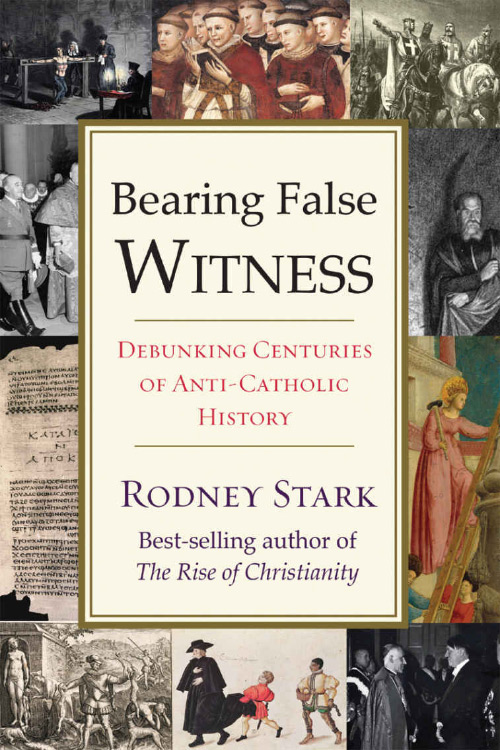 Bearing False Witness: Debunking Centuries of Anti-Catholic History, by Rodney Stark. Templeton Press, 2017.
Bearing False Witness: Debunking Centuries of Anti-Catholic History, by Rodney Stark. Templeton Press, 2017.
This book covers a variety of topics, among them Pope Pius XII's response to the Holocaust. Publisher’s promotional material: “Instead of Pope Pius XII being apathetic or even helpful to the [German National Socialist] movement, such as to merit the title, “Hitler’s Pope,” Stark shows that the campaign to link Pope Pius XII to Hitler was initiated by the Soviet Union, presumably in hopes of neutralizing the Vatican in post-World War II affairs. Pope Pius XII was widely praised for his vigorous and devoted efforts to saving Jewish lives during the war.”
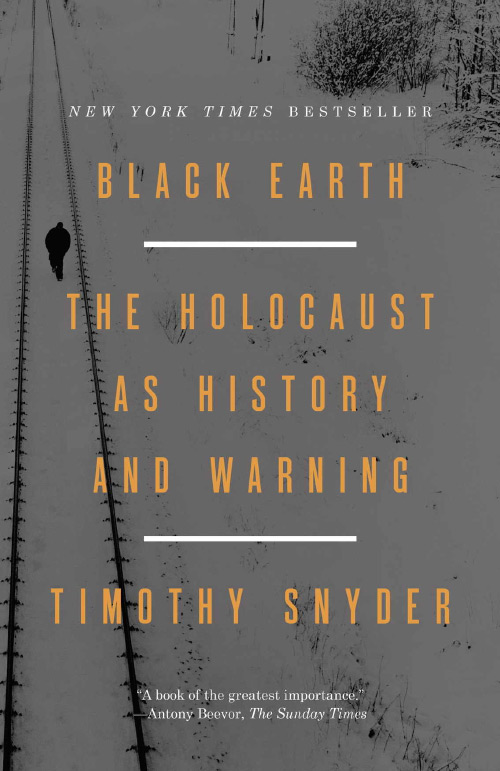 Black Earth: The Holocaust as History and Warning, by Timothy Snyder. Tim Duggan Books, 2016.
Black Earth: The Holocaust as History and Warning, by Timothy Snyder. Tim Duggan Books, 2016.
Snyder writes, “The Holocaust began with the idea that no human instinct was moral. Hitler described humans as members of races doomed to eternal and bloody struggle among themselves for finite resources. Hitler denied that any idea, be it religious, philosophical, or political, justified seeing the other (or loving the other) as oneself. He claimed that conventional forms of ethics were Jewish inventions. . . . Hitler’s alternative to [technological advances in agriculture] was known as Lebensraum, which meant ‘habitat’ or ‘ecological niche.’ Races needed ever more Lebensraum, ‘room to live,’ in order to feed themselves and propagate their kind. Nature demanded that the higher races overmaster and starve the lower. . . . [Hitler was] presenting Jews as an ecological flaw responsible for the disharmony of the planet. . . . The only sound ecology was to eliminate a political enemy; the only sound politics was to purify the earth. . . . In the Nazi mind, war [in the East] was both colonial (to seize territory from the Slavs) and decolonial (to weaken the global domination of Jews). As the colonial war for Lebensraum faltered, Nazis emphasized instead the struggle to save the planet from Jewish domination. Since Jews were held responsible for the ideas that had supposedly suppressed the stronger races, only their extermination could ensure victory.”
“Capitalism, Envy, and the Inner City”, by Michael Levin. The Free Market, vol. 14, no. 2 (February 1996).
Levin, who taught philosophy at City College of New York, looks at the antagonism of some blacks toward Jews and Koreans who do business in black neighborhoods.
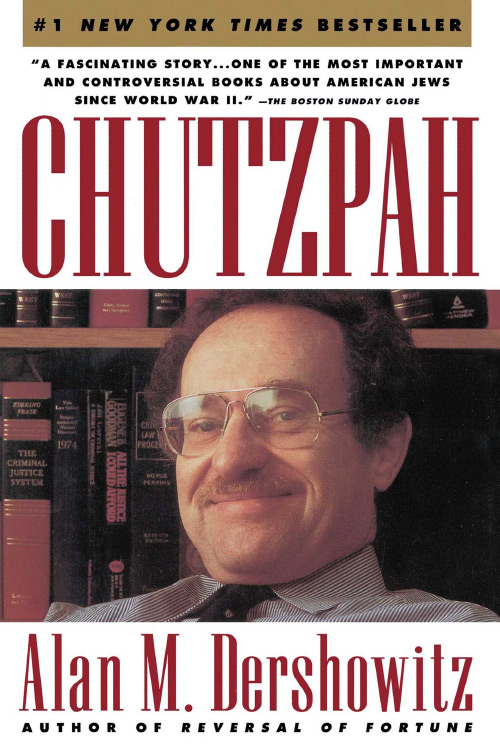 Chutzpah, by Alan M. Dershowitz. Little, Brown & Company, 1991.
Chutzpah, by Alan M. Dershowitz. Little, Brown & Company, 1991.
Harvard Law Professor Alan Dershowitz, a specialist on Constitutional law and civil liberties, writes about the need for American Jews, while still affected by some anti-Semitic discrimination, to cast off their defensiveness and stand up for themselves.
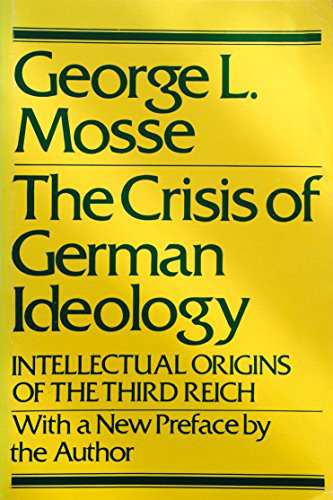 The Crisis of German Ideology: The Intellectual Origins of the Third Reich, by George Mosse. Grosset & Dunlap, 1964.
The Crisis of German Ideology: The Intellectual Origins of the Third Reich, by George Mosse. Grosset & Dunlap, 1964.
Mosse came from a prominent German Jewish family that owned the classical liberal newspaper, the Berliner Tageblatt. In The Crisis of German Ideology, Mosse points out that since the mid-nineteenth century, German intellectuals had fought over competing ideologies—among them, on the one hand, Volkish ideology and related concepts of Germanness and, on the other, Enlightenment Era thinking, classical liberalism, and constitutionalism. Volkish ideology, according to Mosse, is “. . . a direct product of the romantic movement of nineteenth-century Europe” and a reaction against the modernization that followed the Industrial Revolution. Jews, according to Volkish ideologues, were the embodiment of “pernicious capitalism” and the facilitators of the “corrupting force of materialism.”
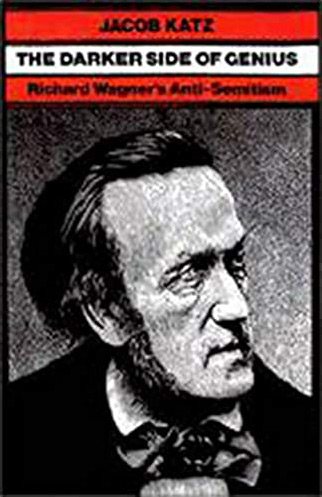 The Darker Side of Genius: Richard Wagner’s Anti-Semitism, by Jacob Katz. University Press of New England for Brandeis University Press, 1986.
The Darker Side of Genius: Richard Wagner’s Anti-Semitism, by Jacob Katz. University Press of New England for Brandeis University Press, 1986.
Katz writes, “It is obvious that Wagner’s opinion of [Felix] Mendelssohn and [Giacomo] Meyerbeer had been fixed before the publication of [Wagner’s] Judaism in Music. It is just as certain, however, that his negative image of both Medelssohn and Meyerbeer was formed independently of their Jewish origin and was not at first connected with it. The composition of the anti-Jewish essay, therefore, marked the establishment of a quasi-factual foundation for his subjective judgment.... [Wagner’s] anti-Jewish sentiments flowed from his rivalry with the two Jews....
“Wagner relied on the stereotype already fabricated by his anti-Semitic predecessors such as Bruno Bauer and Karl Marx.... ‘The Jew ... rules, [said Wagner] and will rule for as long as money remains the power before which all our actions lose their power.’ ... [T]he attack on the power of money represents a remnant of Wagner’s prerevolutionary, extreme socialist enthusiasm.”
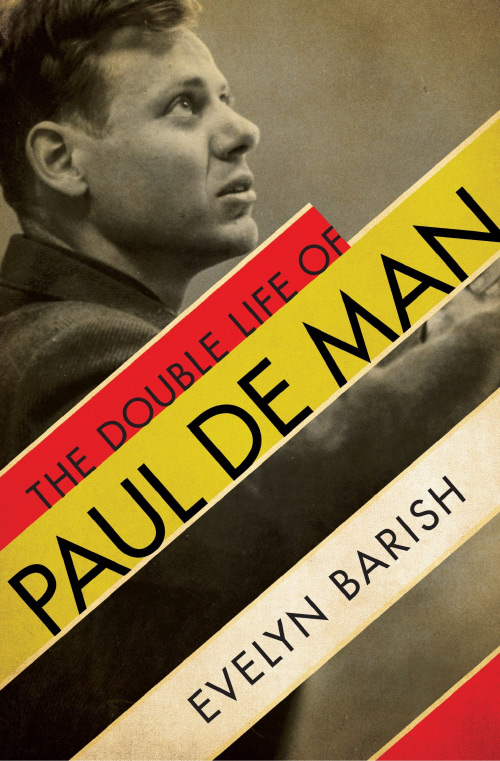 The Double Life of Paul de Man, by Evelyn Barish. Liveright, 2014.
The Double Life of Paul de Man, by Evelyn Barish. Liveright, 2014.
Paul de Man, a central figure in postmodern literary theory and a leading proponent of “deconstructionism,” was a follower of National Socialism. He was influenced by his uncle Henri de Man, a top prewar socialist theoretician and leader of the Belgian Labor Party, who collaborated with the occupying German National Socialists. Louis Menand writes, “[T]he young [Paul] de Man was a fascist. His eyes were open; he did not write in the shadows. The paper he did most of his journalism for, Le Soir, was the biggest daily in Belgium. . . . His articles—he eventually had a weekly column, called ‘Our Literary Chronicle’—largely followed the Nazi line, as did the pieces he contributed to a smaller German-controlled paper, Het Vlaamsche Land (The Flemish Land). He championed a Germanic aesthetic, denigrated French culture as effete, associated Jews with cultural degeneracy, [and] praised pro-Nazi writers and intellectuals.” Clive James writes, “Evelyn Barish tells us exactly why Paul de Man, a pioneer of Theory, should have favored notions about the impossibility of an objective narrative or a fixed personality. Viewed objectively, the narrative of his own life was the story of a cheat and a liar; and he made up his personality as he went along. Yet he fooled one high-level American college after another into treating him as a genius. This is one of the most daunting portraits of a literary charlatan since A. J. A. Symons wrote the life of Baron Corvo.”
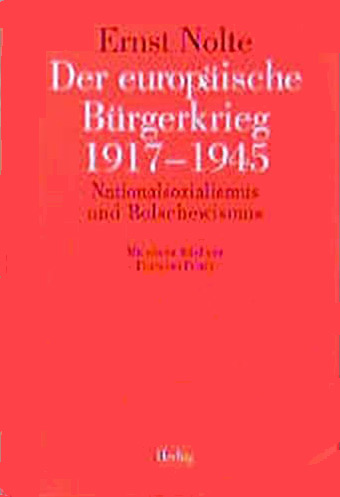 Der Europäische Bürgerkrieg 1917–1945. Nationalsozialismus und Bolschewismus. [The European Civil War, 1917–1945: National Socialism and Bolshevism], by Ernst Nolte. Propyläen Verlag, 1998.
Der Europäische Bürgerkrieg 1917–1945. Nationalsozialismus und Bolschewismus. [The European Civil War, 1917–1945: National Socialism and Bolshevism], by Ernst Nolte. Propyläen Verlag, 1998.
Historian Ralph Raico writes, “Nolte’s thesis is that it was the Communists who introduced into modern Europe the awful fact and terrifying threat of the killing of civilians on a vast scale, implying the extermination of whole categories of persons. (One Old Bolshevik, Zinoviev, spoke openly as early as 1918 of the need to eliminate 10,000,000 of the people of Russia.) . . . Those who became the Nazi elite were well-informed regarding events in Russia, via White Russian and Baltic German émigrés (who even exaggerated the extent of the first, Leninist atrocities). In their minds, as in those of right-wingers generally, the Bolshevik acts were transformed, irrationally, into Jewish acts, a transformation helped along by the existence of a high proportion of Jews among the early Bolshevik leaders. . . . The facts regarding the Ukrainian terror famine of the early 1930s and the Stalinist gulag were also known in broad outline in European right-wing circles. When all is said and done, Nolte concludes, ‘the Gulag came before Auschwitz.’ If it had not been for what happened in Soviet Russia, European fascism, especially Nazism and the Nazi massacre of the Jews, would most probably not have been what they were.”
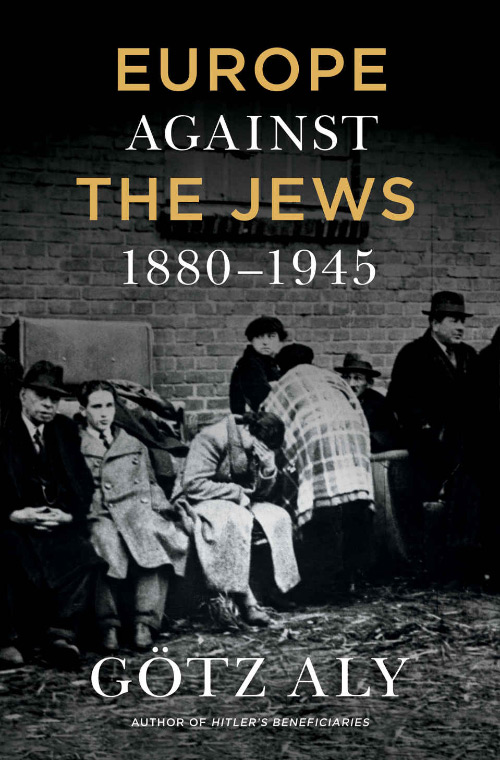 Europe Against the Jews, 1880-1945, by Götz Aly. Metropolitan Books, 2020.
Europe Against the Jews, 1880-1945, by Götz Aly. Metropolitan Books, 2020.
Aly writes, “In 1885, when asked by the Viennese journalist Isidor Singer about the underlying causes behind anti-Semitism, Dutch physiologist Jacob Moleschott answered: ‘Everywhere Jews rank among the best doctors, the most influential writers, and the wealthiest and best educated merchants because they have been restricted to these areas, the only ones in which they have been allowed to achieve anything, yet people wonder why there are so many excellent Jewish doctors and journalists. ... When the same question was asked of [German natural scientist Carl] Vogt, he responded: ‘In my estimation, the answer to the question has nothing to do with religion, but with the instinctive hatred of the untalented for the gifted, the poor for the rich, and sluggish for the ambitious.’
“[Italian agrarian engineer Eugenio Righini] proposed that although Jews were no more intelligent than the Christians around them, they were much better at applying their abilities. Their capacity for getting things done, their focus on goals, and their determined but flexible to get ahead irritated others, in particular ‘their economic competitors,’ Righini wrote. ‘This tension gives rise to envy, and envy is the deepest, most general, and perhaps the most important reason for anti-Semitism.’”
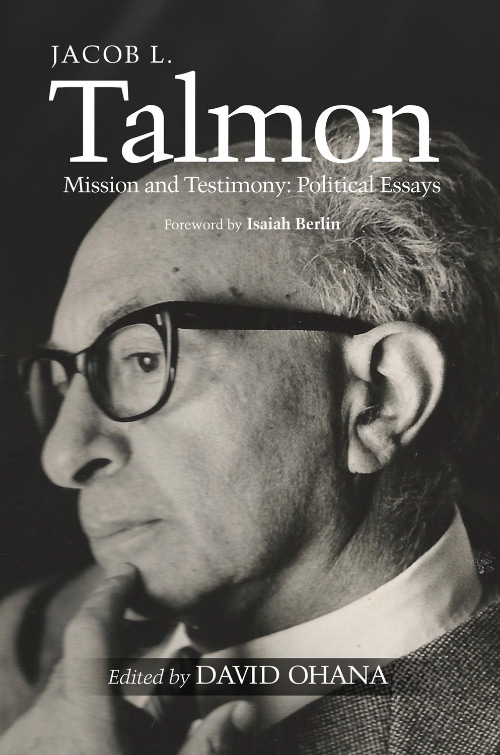 European History—Seedbed of the Holocaust, by Jacob L. Talmon. Midstream, vol. 19, no. 5 (May 1973), pp. 3–25. Reprinted in his Mission and Testimony: Political Essays, ed. by David Ohana. Sussex Academic Press, 2015, pp. 186–217.
European History—Seedbed of the Holocaust, by Jacob L. Talmon. Midstream, vol. 19, no. 5 (May 1973), pp. 3–25. Reprinted in his Mission and Testimony: Political Essays, ed. by David Ohana. Sussex Academic Press, 2015, pp. 186–217.
Talmon writes, “[Jewish Emancipation comes in] the nineteenth century, the century in which the walls of separation come tumbling down and the Jews suddenly leap onto the stage of history. And lo and behold, yesterday’s outcast is achieving phenomenal success. He climbs higher and higher, his touch is felt everywhere. Energy pent up for centuries spurts out in a torrent sweeping away the old and changing things that had seemed as immutable as the laws of nature. He is the pariah risen to sudden preeminence. . . .
“The image of Judas and Shylock, of the crafty and deceitful Jew, of the heretic harboring eternal hatred for the faithful—these images are so deeply ingrained that it is impossible for gentiles to believe that Jewish achievements have been attained honestly and are the proper rewards of talent, industry, and hard work. . . . The frustrated losers from the vast revolutionary changes of the nineteenth century . . . . are bewildered when they look around and see that the Jews who had no place in society are the chief beneficiaries of modernization. . . . [T]he Jews became the target and the victims of a sort of neo-Manicheism from both flanks, the Right and the Left. . . .
“It would be impossible to exaggerate the contribution of the Bolshevik Revolution to the collapse of moral barriers and to the process of man’s brutalization throughout the world. The Russian civil war, the GPU terror, the physical liquidation of entire classes during collectivization and industrialization, the hideous show trials, the mass purges, the slave-labor camps, the bloody, lawless dictatorship—all these provided an example, a challenge, and a license.”
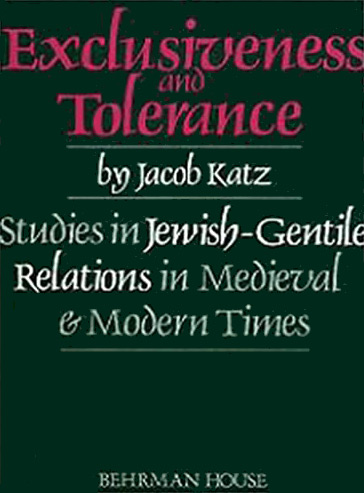 Exclusiveness and Tolerance: Studies in Jewish-Gentile Relations in Medieval and Modern Times, by Jacob Katz. Schocken, 1969.
Exclusiveness and Tolerance: Studies in Jewish-Gentile Relations in Medieval and Modern Times, by Jacob Katz. Schocken, 1969.
Alan Brill writes, “Jacob Katz, the eminent historian of Jewish entrance into modernity, narrated that modern [Jewish] tolerance was due to the eighteenth-century Enlightenment thought of Moses Mendelssohn and the concurrent creation of a neutral society. In Katz’s view, Jews at the end of the eighteenth century moved from the Ghetto restrictions that limited their relationship with the surrounding culture to the post-Enlightenment integration into civil society through enfranchisement and emancipation. Thus as Gentile attitudes toward Jews changed, the Jewish response toward Christianity moved from exclusivism and polemic to Mendelssohn’s universal tolerance.”
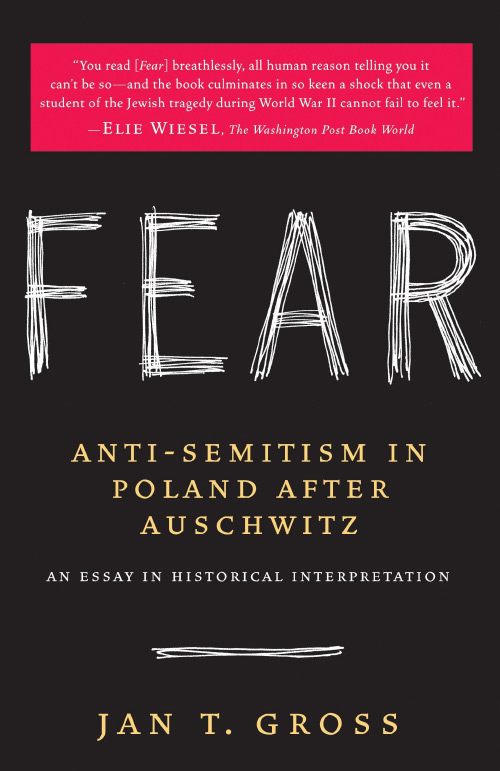 Fear: Anti-Semitism in Poland after Auschwitz: An Essay in Historical Interpretation, by Jan T. Gross. Princeton University Press, 2006.
Fear: Anti-Semitism in Poland after Auschwitz: An Essay in Historical Interpretation, by Jan T. Gross. Princeton University Press, 2006.
Gross argues that widespread anti-Semitism in postwar Poland has been rooted in the stealing of the property of Jews who were taken away by the occupying German National Socialists. There were 3 ½ million Jews in prewar Poland, and over 90% were killed in the Holocaust. There was and is in the Polish population a massive sense of complicity in the wartime illicit plundering of Jews’ property, combined with a fear that surviving Jews will come back to reclaim their property.
In the mid-1940s, after World War II, the Communists were taking over and, as Gross says, “restitution of private property to its rightful owners was nowhere on the Communists’ agenda.” The Communist government didn’t help surviving Jews get their prewar property back, and in many cases, the government assumed control of “abandoned” buildings and land and decided what should be done with them. Gross says that “not only [postwar] society at large but also the administrative apparatus and the judiciary in Communist Party-dominated Poland manifest what must be recognized as institutionalized anti-Semitism.” The despoiled surviving Jews were a standing affront to Communists’ pretensions, and the Communists deliberately drove almost all of them into emigration in three successive waves in the late 1940s, the mid-1950s, and late 1960s. Even in Poland’s 2020 election (obviously not covered in this book), the ruling Law and Justice party (a culturally conservative, nationalist, welfare-state party) mobilized supporters by explicitly evoking the fear that if the party lost, returning Jews would reclaim property.
“From Anti-Westernism to Anti-Semitism,” by Konstantin Azadovskii and Boris Egorov. Journal of Cold War Studies, vol. 4, no.1 (Winter 2002), pp. 66–80.
How the domestic repressive campaign in the Soviet Union that began in 1947 and 1948 against “bourgeois liberal” [classical liberal] influences segued into anti-Semitism in 1949.
The Ghost in Poland, by Abraham Brumberg. New York Review of Books, June 2, 1983.
Brumberg writes, “Polish anti-Semitism is closely tied to the history of communist rule. . . . During the struggle within the Polish [Communist] Party following Stalin’s death, the hardline ‘Natolin’ faction tried to undermine its more liberal rivals . . . by branding them as ‘Yids’ and ‘Jewish Stalinists’ who were responsible for all of Poland’s problems after the war. Ten years later the same tactics were used by [Polish Communist leader Władysław] Gomulka’s new allies against his former supporters, the now disenchanted liberals. Many of these intellectuals still held leading positions in the universities and the press, but they were accused of being anti-Polish, of exaggerating the evils of anti-Semitism in their writings, and of ignoring Hitler’s Polish victims while making too much of Jewish sufferings during the war. . . . When students began protesting censorship in March 1968, they were accused of being agents of Zionist and Western intelligence services. ‘Anti-Zionist’ rallies were staged across the country, thousands of people lost their jobs, and some were arrested and sentenced for such crimes as ‘wrecking’ and ‘espionage.’ By 1969 nearly all the remaining Polish Jews, few of whom had ties to Jewish culture or religion, had been forced out of the country. . . .”
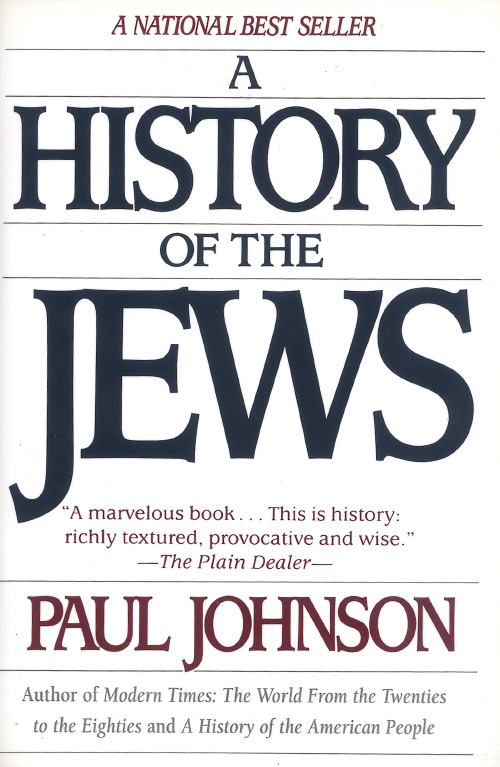 A History of the Jews, by Paul Johnson. Harper Perennial, 1988.
A History of the Jews, by Paul Johnson. Harper Perennial, 1988.
According to Johnson, anti-Semitism has its roots in the fierce antagonism between Greek values and Jewish values during the Hellenistic age. Johnson writes, “Both the great Jewish revolts against Roman rule should be seen not just as risings by a colonized people, inspired by religious nationalism, but as a racial and cultural conflict between Jews and Greeks. . . . As in modern times, . . . anti-Semitism was fuelled not just by vulgar rumour, but by the deliberate propaganda of intellectuals, . . . most of them Greeks.”
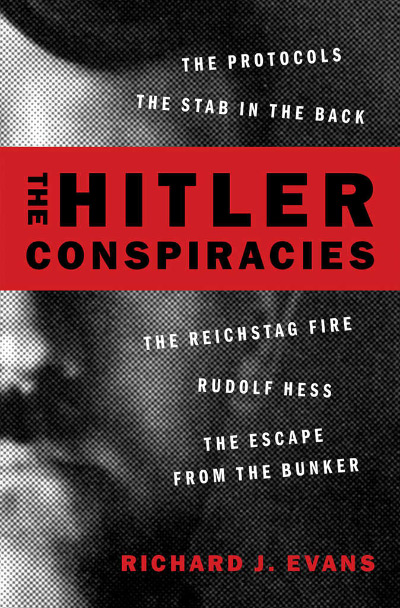 The Hitler Conspiracies, by Richard J. Evans. Oxford University Press, 2020.
The Hitler Conspiracies, by Richard J. Evans. Oxford University Press, 2020.
For our purposes, the most relevant chapter is the first: “Were the Protocols a ‘Warrant for Genocide?” This is an up-to-date summary of the scholarship on the anti-Semitic forgery The Protocols of the Learned Elders of Zion. The Protocols were a composite hoax, stitched together by Russian illiberal anti-Semites from a variety of previous fictional works. It purports to be the minutes of a meeting of Jewish leaders who are supposedly fomenting chaos and social division in order to impose a worldwide Jewish dictatorship. Among the supposedly divisive ideologies is classical liberalism. The Jewish conspirators are supposedly using the free market to foment “a damaging economic struggle of all against all.” Constitutional liberties are supposedly just a ruse used by the Jewish conspirators to take power. One of the precursor documents set forth almost the complete program of mid-19th-century German classical liberalism as a subversive Jewish plot.
Friedrich Heer points out that the immediate purpose of publishing the Protocols in book form in Russia in 1905 was to block a classical liberal outcome of the Revolution of 1905. The worried government had promised in its October Manifesto “true inviolability of the person, freedom of conscience, of speech, of assembly, and the right of forming associations.” Book publication of the Protocols was originally part of the effort by illiberal and anti-Semitic elements to oppose this classical liberal constitutional reform.
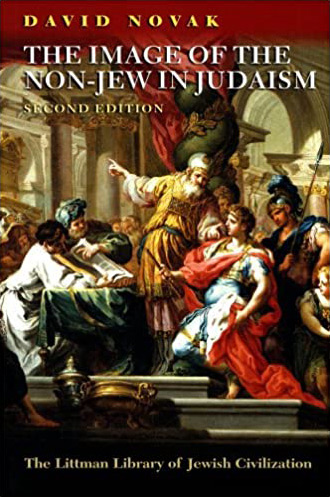 The Image of the Non-Jew in Judaism: A History and Constructive Study of the Noahide Laws, by David Novak. (Toronto Studies in Theology, vol. 14.) Edward Mellen Press, 1983.
The Image of the Non-Jew in Judaism: A History and Constructive Study of the Noahide Laws, by David Novak. (Toronto Studies in Theology, vol. 14.) Edward Mellen Press, 1983.
In Judaism there is a concept called Noahide law, this is the law of peoples (the sons of Noah) that already existed before Moses received the Ten Commandments and before other specifically Jewish laws were revealed. Noahide law, in this view, forms a background to both Jewish and Gentile law. Many Talmudic commentators have thought that because Christian doctrine conforms to Noahide law and accepts the Hebrew Scriptures, Christianity has an acceptable basis for morality—not as complete as the Jewish basis but acceptable.
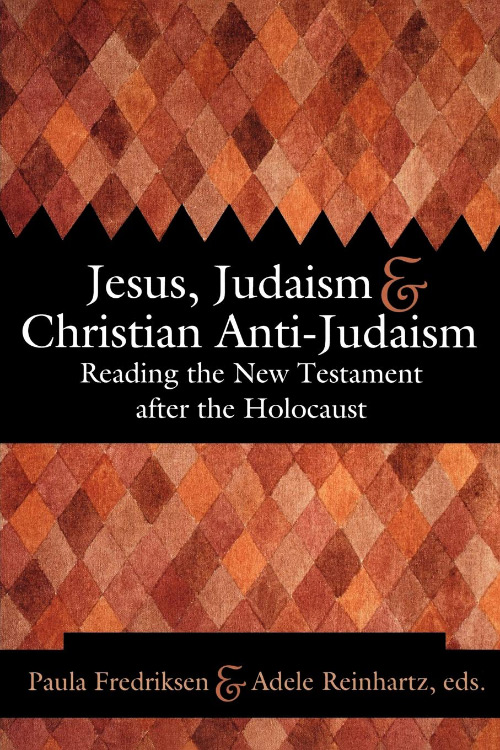 Jesus, Judaism, and Christian Anti-Judaism: Reading the New Testament after the Holocaust, ed. by Paula Fredriksen and Adele Reinhartz. Westminster John Knox Press, 2002.
Jesus, Judaism, and Christian Anti-Judaism: Reading the New Testament after the Holocaust, ed. by Paula Fredriksen and Adele Reinhartz. Westminster John Knox Press, 2002.
Of the scholars in this collection, Paula Fredriksen and John G. Gager are the ones relevant for our purposes. Fredriksen points out that Jews at the time of Jesus were rancorous when it came to disputes among themselves about the right way to be a Jew. This is the context in which to view the harsh criticisms which Paul and the Gospel writers level at other Jews, including fellow followers of Jesus. Such remarks were “entirely normal” at the time, she says. In fact, when compared to “the vituperation lavished on other sorts of Jews” by the Dead Sea scroll-writers, the polemics of followers of Jesus are “rather mild.” The “targets of Paul’s most intemperate invective” are “specifically other Jews like himself” who were likewise endeavoring to convert Gentiles. The error came when later generations interpreted “the intra-Jewish disputes” of the early followers of Jesus as a “condemnation of all Judaism.”
Paul, Gager explains, divided the followers of Jesus into two groups: Jews and Gentiles. The Jewish followers still needed to follow Jewish law. The Gentiles who became followers of Jesus didn’t need to and shouldn’t follow Jewish law. Worst would be Jesus-following Gentiles who got circumcised, but weren’t strictly observant in following Jewish law. Paul’s bitter polemics against “Jews” were against fellow Jews who were anti-Pauline fellow Jesus followers and who required Gentiles to become Jews or who winked at Gentiles-become-Jews who followed the law half-heartedly. The image of Paul, Gager says, as the “father” of Christian anti-Semitism has “no foundation” in Paul’s New Testament letters.
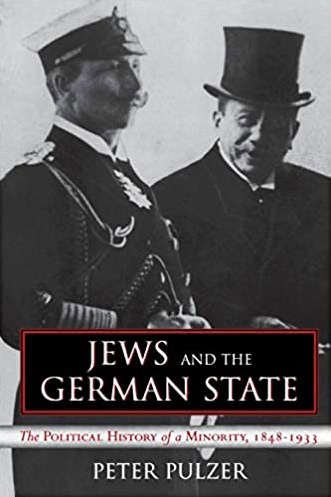 Jews and the German State: The Political History of a Minority, 1849–1933, by Peter Pulzer. Wayne State University Press, 2003.
Jews and the German State: The Political History of a Minority, 1849–1933, by Peter Pulzer. Wayne State University Press, 2003.
Pulzer writes, “[F]or a perceptive Jew the revival of anti-Semitism [in the 1870s] and the [Bismarck] government’s turn to the Right [in 1878] reinforced each other. Their significance lay not so much in the immediate legislative consequences, which could, after all, be reversed, but in their symbolic content. Just as the protectionists had demanded ‘economic legislation which will re-awaken in the people the spirit of love and sense for authority’ and declared the state based on the rule of law [Rechtsstaat] has outlived itself. We shall have to return to the so-called patrimonial and patriarchal state’, so [National Liberal Party politician] Ludwig Bamberger was aware that ‘it is not a question of a few marks’ worth of import duties in the dispute over economic principles ... but of life and death in the arena of free, peaceful, modern development’. That anti-Semitism was a weapon to be used against [classical] Liberalism was obvious to most of them....”
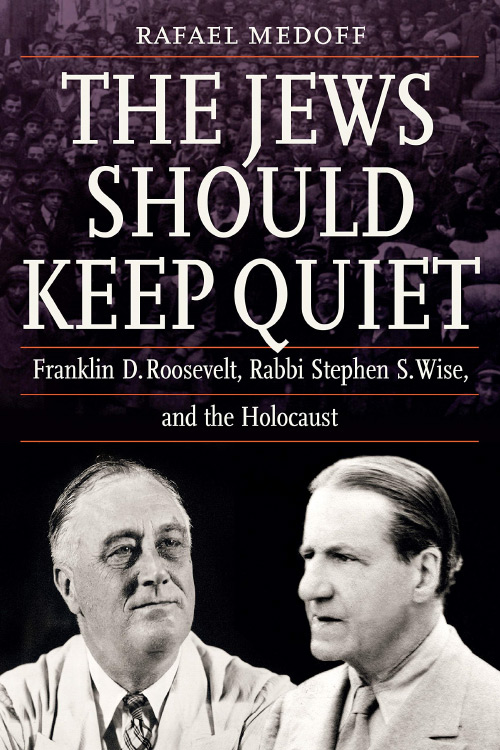 The Jews Should Keep Quiet: Franklin D. Roosevelt, Rabbi Stephen S. Wise, and the Holocaust, by Rafael Medoff. Jewish Publication Society, 2019.
The Jews Should Keep Quiet: Franklin D. Roosevelt, Rabbi Stephen S. Wise, and the Holocaust, by Rafael Medoff. Jewish Publication Society, 2019.
Publisher’s promotional material: “Rafael Medoff delves into difficult truths: With FDR’s consent, the administration deliberately suppressed European immigration far below the limits set by U.S. law. His administration also refused to admit Jewish refugees to the U.S. Virgin Islands, dismissed proposals to use empty Liberty ships returning from Europe to carry refugees, and rejected pleas to drop bombs on the railways leading to Auschwitz, even while American planes were bombing targets only a few miles away—actions that would not have conflicted with the larger goal of winning the war. . . . Medoff explores the sensitive question of the president’s private sentiments toward Jews. Unmasking strong parallels between Roosevelt’s statements regarding Jews and Asians, he connects the administration’s policies of excluding Jewish refugees and interning Japanese Americans.
Documenting how Roosevelt and others pressured [Rabbi Stephen S. Wise, American Jewry’s foremost leader in the 1930s and 1940s] to stifle American Jewish criticism of FDR’s policies, Medoff chronicles how and why the American Jewish community largely fell in line with Wise. David G. Dalin writes, "The Jews Should Keep Quiet is the culmination of more than three decades of research, and it is devastating. Few readers will come away from Rafael Medoff ’s book without their view of FDR having been significantly changed."
“Marx/Engels and Racism,” by W. H. Chaloner and W. O. Henderson. Encounter, July 1975. Download PDF
Marx viewed the “rapacious Jews” as standing in the way of socialist transformation, but numerous accounts of Marx’s life and teachings intended for progressive readers (such Franz Mehring’s Karl Marx) cover up this aspect of Marx.
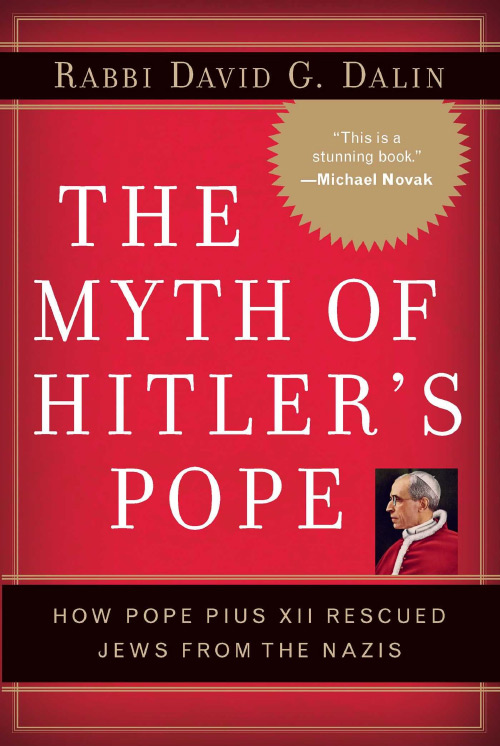 The Myth of Hitler’s Pope: Pope Pius XII And His Secret War Against Nazi Germany, by David G. Dalin. Regnery, 2005.
The Myth of Hitler’s Pope: Pope Pius XII And His Secret War Against Nazi Germany, by David G. Dalin. Regnery, 2005.
David Novak writes, “Rabbi David Dalin . . . effectively answers the vicious, distorted charges that portray Pius XII as a Nazi sympathizer who did nothing to help save Jews from Nazi genocide. Dalin’s meticulous scholarship shows just what an effective enemy of Nazi racism Pius XII really was, both before and during his papacy, and the personal and collective risks he took to rescue as many Jews as he could under the most dangerous conditions imaginable.”
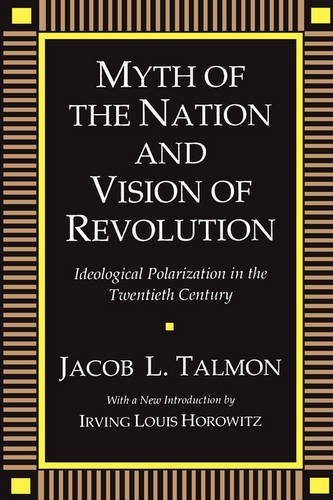 Myth of the Nation and Vision of Revolution: Ideological Polarization in the Twentieth Century, by Jacob L. Talmon. Routledge, 1991.
Myth of the Nation and Vision of Revolution: Ideological Polarization in the Twentieth Century, by Jacob L. Talmon. Routledge, 1991.
For our purpose, the most relevant part is section 4, “The Jewish Dimension.” Talmon writes, “In [Richard Wagner’s tract The Jews in Music] the composer juxtaposed the abstract imperative of [classical] liberal rationalism that the Jews should be treated as equals with instinctive revulsion from them. Which was more authentic? By deciding it was the latter, Wagner bade farewell both to rational, analytic reasoning, and to the rights of man. . . . Much of this had been foreshadowed by German romanticism. . . . Racist anti-Semitism provided . . . a mirror image of socialist Marxism. Blood took the place allotted to matter in dialectical materialism, changes in the composition of blood replaced changes in modes of production, Jewish exploitation replaced capitalist oppression, Jewish-socialist incitement replaced class struggle, the elimination of Jews replaced the revolution, the confiscation of Jewish property, and its nationalization and redistribution, replaced the social transformation.”
“National Socialism and Antisemitism: The Case of Maurice Barrès,” by Zeev Sternhell. Journal of Contemporary History, vol. 8, no. 4 (October, 1973), pp. 47–66.
Maurice Barrès wrote at the time of the Dreyfus affair, “That Dreyfus was capable of treason, I concluded from his race.” Sternhell writes, “Barrès believed that in modern antisemitism he had found the best means for bringing the proletariat into the national communion, providing the ideal grounds on which social divisions could be overcome and the entire nation mobilized, and thus transformed simple xenophobic and anti-Jewish feelings into a political concept of the first magnitude. . . . For Barrès, nationalism was by definition socialist, . . . as it postulated [protectionism against immigrants, foreign goods, and foreign workers], against the ‘cosmopolitan financial feudality’ and the ‘bourgeois aristocracy which were encouraging foreign parasitism and the exploitation by the Jews and by international high finance. . . . Barrès insisted on the republican and progressive aspect of the anti-Dreyfusism and antisemitism he professed. . . . Left-wing antisemitism was . . . a form of revolt against economic [classical] liberalism and bourgeois society. . . . This populist . . . . antibourgeois nationalism, . . . coupling together political authoritarianism, romantic antiliberalism and antisemitism [was a] rival to Marxism.”
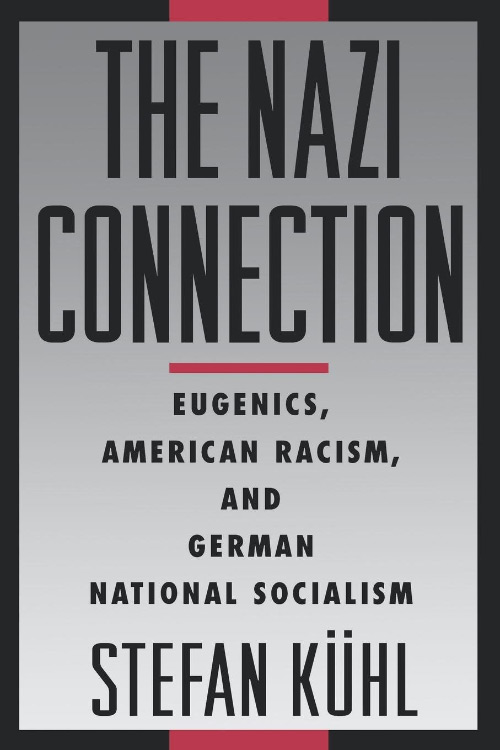 The Nazi Connection: Eugenics, American Racism, and German National Socialism, by Stefan Kühl. Oxford University Press, 1994.
The Nazi Connection: Eugenics, American Racism, and German National Socialism, by Stefan Kühl. Oxford University Press, 1994.
Kühl writes, “[Progressive and conservationist] Madison Grant wrote to his friend [Harry H.] Laughlin that, although ‘most people of our type’ [that is, fellow eugenicists] were in sympathy with Germany’'s [racial policy] actions, eugenicists had to 'proceed cautiously in endorsing them.’” Sheila Faith Weiss writes “The author argues that the continued support given by American eugenicists to their German colleagues prior to the United States’ entry into World War II, and (more specifically) their endorsement of most aspects of Nazi racial policy, constituted a critical source of scientific legitimation for Hitler’s ‘racial state.’ In advancing his thesis, the German historian and sociologist Kühl takes issue with much of the historiography of American eugenics. He is also at pains to point out that, contrary to conventional wisdom, it was not merely a small handful of extremist and marginalized American eugenicists who were initially impressed by the rhetorical initiatives of Nazi race hygienists, and that this substantial (in Kühl’s opinion) group of American eugenicists did not dampen their enthusiasm for German race hygiene once the Nazis began turning rhetoric into reality.”
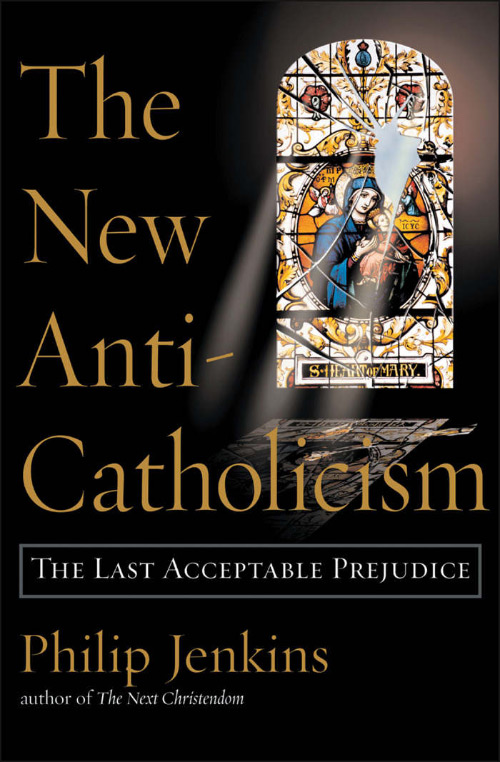 The New Anti-Catholicism: The Last Acceptable Prejudice, by Philip Jenkins. Oxford University Press, 2003.
The New Anti-Catholicism: The Last Acceptable Prejudice, by Philip Jenkins. Oxford University Press, 2003.
This book by an eminent religious-studies scholar covers many topics. For our purposes, chapter 9, “Black Legends: Rewriting Catholic History”, is the relevant one. The chapter makes the point that in discussing the New Testament we must distinguish between anti-Judaism (opposition to the Jewish religion) and anti-Semitism (hatred of the Jewish people). Jenkins argues that Paul and the authors of the gospels were Jews themselves in background. While they rejected the Jewish religion of their day and believed that Christianity superseded it, they did not hate the Jewish people. The harsh language used in the New Testament to criticize Jewish religious leaders and adherents of the day is mild when compared with the rhetoric found in the Dead Sea Scrolls. The chapter also discusses Catholic opposition to the German National Socialist atrocities against Jews and Catholic efforts to rescue Jews and those of Jewish background.
“A Note on Hayek and Anti-Semitism,” by Ronald Hamowy. History of Political Economy, vol. 34, no.1 (2002), pp. 255-60.
Hamowy writes, “It seems clear ... that [Melvin] Reder is equating anti-Semitism with any characterization of Jews by a non-Jew that is not explicitly laudatory. Even statements of historical fact are not exempt.”
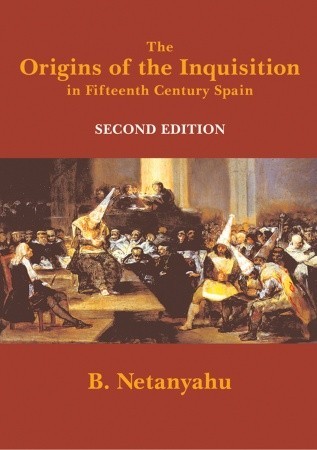 The Origins of the Inquisition in Fifteenth Century Spain, by Benzion Netanyahu. Random House, 1995.
The Origins of the Inquisition in Fifteenth Century Spain, by Benzion Netanyahu. Random House, 1995.
Benzion Netanyahu was an historian but also personal secretary to revisionist Zionist leader Ze’ev Jabotinsky and the father of Israeli politician and longtime prime minister Benjamin Netanyahu and of Jonathan Netanyahu, the hero of Entebbe. The Kirkus review says, “An internationally renowned scholar shows that the Spanish Inquisition was originally the result of a long build-up of anti-Semitic racism for which the defense of Catholic orthodoxy was only a pretext. Within a few years of the 1391 pogroms in Spain, notes Netanyahu, conversions to Christianity reduced the country’s Jewish community, the largest in the world, by nearly one third. Descendants of these converts, known as ‘conversos’ (and pejoratively as Marranos, ‘swine’), became a powerful elite; but following accusations that they were ‘Judaizing,’ i.e., secretly observing Jewish rituals, the Inquisition was set up in 1480 to inquire into their Christian orthodoxy. Netanyahu confesses how his assumption that the conversos were Jewish martyrs was shattered when his reading revealed that they were bona fide Christians, bent on assimilation, who were . . . hated by their fellow Christians on account of their economic and political ascendancy.” In Benzion Netanyahu’s obituary, the New York Times wrote that he had argued “jealousy over [converted] Jews’ success in the economy and at the royal court [had] fueled the oppression.” The book won the 1995 National Jewish Book Award in the Sephardic Studies.
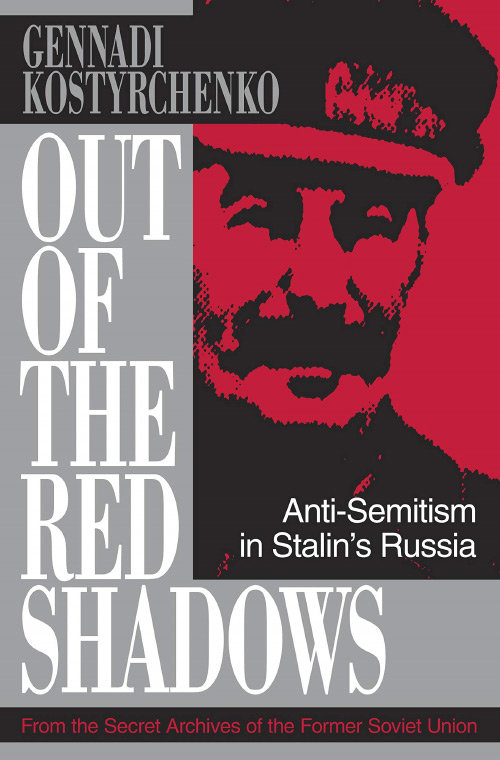 Out of the Red Shadows: Anti-Semitism in Stalin’s Russia, by Gennadi Kostyrchenko. Prometheus Books, 1995.
Out of the Red Shadows: Anti-Semitism in Stalin’s Russia, by Gennadi Kostyrchenko. Prometheus Books, 1995.
Includes an important discussion of anti-Semitic affirmative action under really-existing socialism. From a summary by “Marina” on amazon.com: “Stalin suspiciously eyed the large numbers of Jews in dominant sectors of the Soviet government, such as in the Central Committee. Jews dominated the state media, medical profession and legal profession as well as the economics and philosophy departments of Moscow and Leningrad Universities. Stalin also decided that Jews [directed] the vital automotive and military sectors; he ordered his subordinates to adjust the ratios of Jews to Russians and other minorities in the Russian economy. To achieve these ratios, Jews were systematically ejected from directorships in Moscow-area factories and transferred to similar managerial jobs in the hinterlands. . . .
“In 1953 Stalin focused his attention on Jews' dominance of the medical field—and on allegations of a Russian doctor that Jewish doctors had brought about the premature death of Zhdanov and Shcherbakov through inadequate treatment. The charge expanded to include the alleged medical murders of Russian author Maksim Gorky and his son. Stalin's investigators had begun collecting evidence on the alleged medical subversion [the Doctors’ Plot], when the investigation was cut short by Stalin's own sudden death of a cerebral hemorrhage.”
“Prejudice Is Free, But Discrimination Has Costs,” by Steven Farron. Journal of Libertarian Studies, vol. 14, no. 2 (Summer 2000), pp. 179–245. Download PDF
Farron looks at discrimination in Malaysia, South Africa, the United States, and National Socialist Germany. He says that the National Socialists (together with many other German Gentiles) believed that Jews were overrepresented in German economic, professional, and cultural life. To address this supposed problem, the National Socialists put in place a draconian form of “affirmative action” for Gentiles. The National Socialists tapped into envy of Jewish success and the eagerness of Gentiles to rid themselves of Jewish competitors. When ousting Jews from business, the professions, and culture proved difficult (because of their widely recognized abilities), Hitler turned to violence and extermination.
“The Relationship Between Public and Private Schooling and Anti-Semitism,” by Jay P. Greene and Ian Kingsbury. Journal of School Choice, vol. 11, no. 1 (2017), pp. 111-130.
From the abstract: “This article [uses] a large, nationally representative survey of over 1,500 adults in the United States to see how [attending a public or private school as a child] is related to adult anti-Semitism. It finds that even after controlling for a variety of background characteristics, people who attended private schools exhibit more positive attitudes toward Jews than those who attended public schools.”
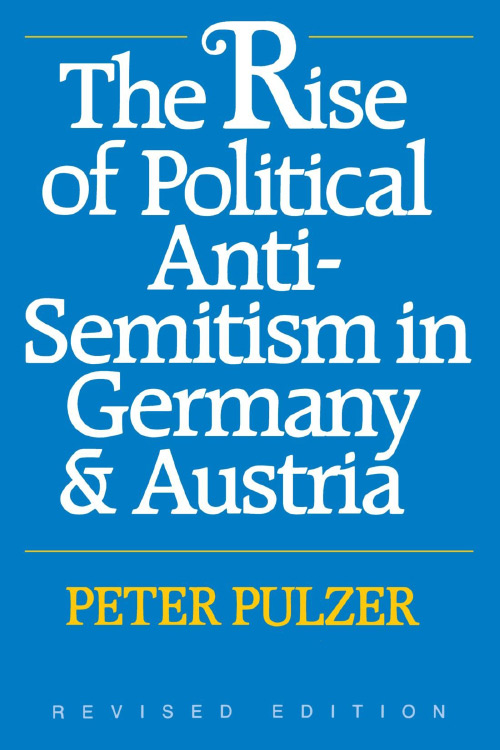 The Rise of Political Anti-Semitism in Germany and Austria, rev. ed., by Peter G. J. Pulzer. Harvard University Press, 1988.
The Rise of Political Anti-Semitism in Germany and Austria, rev. ed., by Peter G. J. Pulzer. Harvard University Press, 1988.
Pulzer writes, “The dominant ideology [in Germany and Austria] of the period [from 1871 to 1918] was [classical] Liberalism; a study of the theoretical content of anti-Semitism will show us that it represented in the first place, a reaction against this ideology.... The main tenets of nineteenth-century European Liberalism may be summarized as parliamentary government, the rule of law, the absence of legally established class privileges, a laissez-faire economy, and freedom of speech and association. Against almost all of these anti-Semites took a stand.
“In addition to these, its institutional aspects, [classical] Liberalism had a far wider meaning. It was a set of moral qualities, those of rationalism, humanism, and—to give it its German context Aufklärung. To be ‘liberal’ means in German even more than in English, to be just, broadminded, and generous. The anti-Semites opposed not only the institutions of [classical] Liberalism, they fought its whole moral system.... Since the struggle for emancipation [of the Jews] was so closely connected with the struggle for [classical] Liberalism, those who opposed the one opposed the other also, hoping to kill both birds with the same stone.”
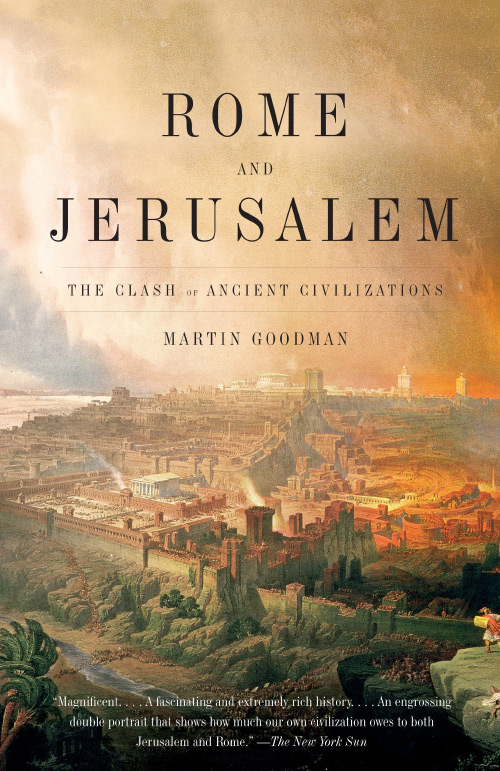 Rome and Jerusalem: The Clash of Ancient Civilizations, by Martin Goodman. Vintage, 2008.
Rome and Jerusalem: The Clash of Ancient Civilizations, by Martin Goodman. Vintage, 2008.
According to Goodman, anti-Semitism has its roots in the need for the Roman Empire’s Flavian dynasty to gain political legitimacy and acceptance of its authority. The Flavians sought to gain that legitimacy from military glory. The Flavian propagandists therefore heightened the importance of the victory of Vespasian and Titus over the Jewish Revolt of 66–70 AD and expanded upon the supposed danger of Jewish culture to Graeco-Roman civilization. Goodman edited both the Journal of Roman Studies and the Journal of Jewish Studies. He has taught Roman history at Birmingham and Oxford Universities and is currently Professor of Jewish Studies at Oxford.
“The Rothschild Libel: Why Has It Taken 200 Years for an Anti-Semitic Slur that Emerged from the Battle of Waterloo to Be Dismissed?,” by Brian Cathcart. The Independent (UK), May 3, 2015.
How an anti-Semitic left-wing polemicist manufactured a false tale about the Rothschild banking family. Cathcart writes, “Versions appear in a Hollywood film of 1934 and the 2009 Sebastian Faulks novel A Week in December; in past editions of the Dictionary of National Biography and Encyclopaedia Britannica; in Elizabeth Longford's acclaimed 1970s biography of the Duke of Wellington; and (with a very different analysis) in Niall Ferguson's authorised history of the Rothschilds. Perhaps more predictably, the story provided the plot for a Nazi film of 1940 entitled The Rothschilds: Shares in Waterloo, and the tale can be read on many anti-Semitic websites. ...[T]he former CIA chief Allen Dulles repeated it in a 1963 book on espionage....”
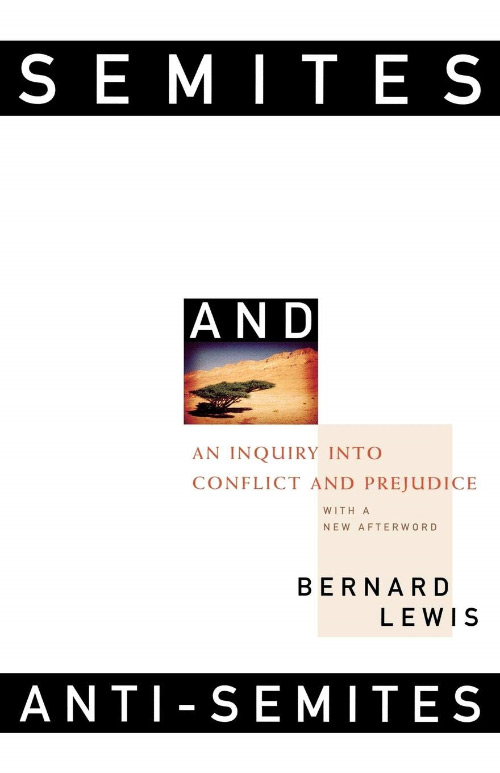 Semites and Anti-Semites: An Inquiry into Conflict and Prejudice, by Bernard Lewis. W. W. Norton & Company, 1999.
Semites and Anti-Semites: An Inquiry into Conflict and Prejudice, by Bernard Lewis. W. W. Norton & Company, 1999.
Daniel Pipes writes, “[A view of anti-Semitism in the Muslim world], which I associate with Bernard Lewis, holds that anti-Semitism is essentially an import from Europe; that Islam lacks the Christian tradition of exaggerating Jewish power, and that, just because it results from disdain rather than fear, Jews have had no particular importance in Islam. The modern obsession with Jews in the Muslim world is a recent phenomenon that derives from Europe. Just as the Muslims learned about forks and knives and airplanes and modern medicine from Europe, so they received their notions of the Jew from Europe.”
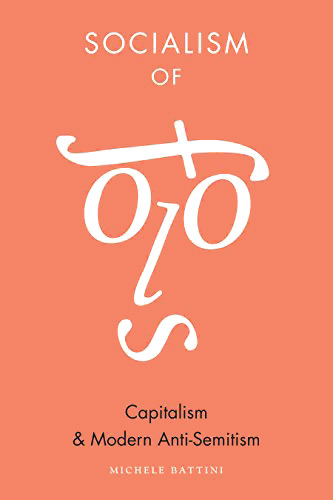 Socialism of Fools: Capitalism and Modern Anti-Semitism, by Michele Battini, trans. by Noor Mazhar and Isabella Vergnano. Columbia University Press, 2016.
Socialism of Fools: Capitalism and Modern Anti-Semitism, by Michele Battini, trans. by Noor Mazhar and Isabella Vergnano. Columbia University Press, 2016.
Carlo Ginzburg describes this as “a lucid, passionate book on a deeply disturbing subject and a thoughtful analysis of left-wing anti-Semitism throughout the nineteenth and twentieth centuries.” Publisher’s publicity material: “In Socialism of Fools, Michele Battini ... recovers the potent anti-Jewish, anticapitalist propaganda that cemented the idea of a Jewish conspiracy in the European mind ... These ideas spread among socialist and labor movements in the nineteenth century and intensified during the Long Depression of the 1870s. Anti-Jewish anticapitalism then migrated to the Habsburg Empire with the Christian Social Party; to Germany with the Anti-Semitic Leagues; to France with the nationalist movements; and to Italy, where revolutionary syndicalists made anti-Jewish anticapitalism the basis of an alliance with the nationalists.”
“The Socialist Calumny Against the Jews,” by Ludwig von Mises. In his Omnipotent Government: The Rise of the Total State and Total War. Yale University Press, 1944.
Ludwig von Mises writes, “[T]he Nazis reject as Jewish everything which stems from Jewish authors. This condemnation includes the writings of those Jews who, like Stahl, Lassalle, Gumplowicz, and Rathenau, have contributed many essential ideas to the system of Nazism. But the Jewish mind is, as the Nazis say, not limited to the Jews and their offspring only. Many ‘Aryans’ have been imbued with Jewish mentality—for instance the poet, writer, and critic Gotthold Ephraim Lessing, the socialist Frederick Engels, the composer Johannes Brahms, the writer Thomas Mann, and the theologian Karl Barth. They too are damned. Then there are whole schools of thought, art, and literature rejected as Jewish. Internationalism and pacifism are Jewish, but so is warmongering. So are [classical] liberalism and capitalism, as well as the ‘spurious’ socialism of the Marxians and of the Bolsheviks. The epithets Jewish and Western are applied to the philosophies of Descartes and Hume, to positivism, materialism and empirio-criticism, to the economic theories both of the classics and of modern subjectivism. Atonal music, the Italian opera style, the operetta, and the paintings of Impressionism are also Jewish. In short, Jewish is what any Nazi dislikes. If one put together everything that various Nazis have stigmatized as Jewish, one would get the impression that our whole civilization has been the achievement only of Jews.”
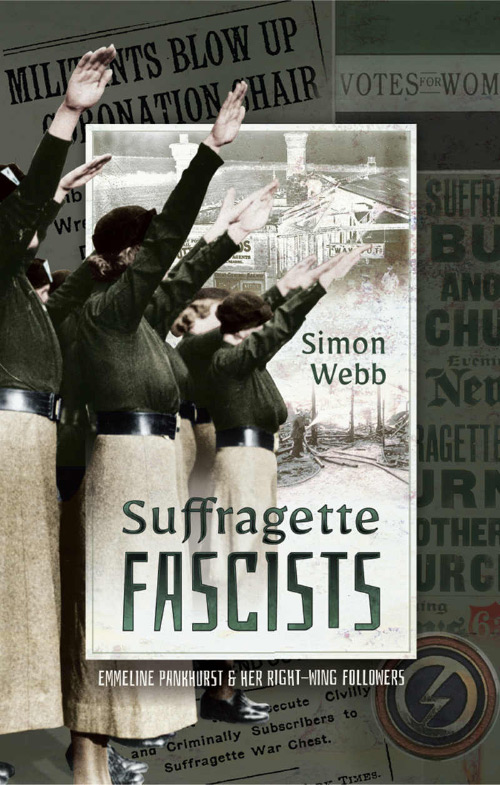 Suffragette Fascists: Emmeline Pankhurst and Her Right-Wing Followers, by Simon Webb. Pen & Sword, 2020.
Suffragette Fascists: Emmeline Pankhurst and Her Right-Wing Followers, by Simon Webb. Pen & Sword, 2020.
In the first decades of the twentieth century, Emmeline Pankhurst’s Women’s Social and Political Union (WSPU) was the most important militant group supporting votes for women in Britain and also a proto-fascist movement. Significant numbers of suffragette leaders went on to hold prominent posts in Oswald Mosley’s British Union of Fascists. WSPU leaders often supported eugenics and anti-Semitism. Ideological movement from socialism to fascism (as had been the case with Mussolini) was not uncommon. WSPU activist and council-communist Sylvia Pankhurst (daughter of Emmeline) was so left-wing that Lenin denounced her in his Left-Wing Communism: An Infantile Disorder (1920), but she was also an anti-Semite and eugenicist. The book includes brief case studies of five WSPU leaders who became important fascists.
Webb writes, “The suggestion that anti-Semitism was a deeply-rooted feature of the WSPU may seem unpalatable to modern readers and yet it is without doubt the case. Sometimes, this hostility to Jews on the part of the suffragettes was implicit and needed to be ‘decoded,’ but on other occasions no bones were made about how influential figures in the WSPU, including Emmeline Pankhurst and all three of her daughters, felt about Jews, especially those whom they believed to be powerful or rich.”
The Talmud in Anti-Semitic Polemics, Anti-Defamation League, 2003. Download PDF
From the text: “Recently there has been a renewal of attacks on Judaism and Jews through recycling of old accusations and distortions about the Talmud. ... It is impossible ... to deal with all of the [quotations] from Jewish literature cited by anti-Semites in their effort to denigrate Judaism and spread their own vile views. The ... examples [in this booklet] characterize how anti-Semites are able to mangle and distort rabbinic and Talmudic passages. Nearly every other explanation of passages cited by anti-Talmud polemicists contain similar ignorance, distortion or tendentious interpretation.”
“Was Marx an Anti-Semite?,” by Edmund Silberner. Historia Judaica, vol. 11, no. 1 (April 1949), pp. 3–52.
Silberner writes, “If the pronouncements of Marx are not chosen at random, but are examined as a whole, and if . . . by anti-Semitism aversion to the Jews is meant, Marx not only can but must be regarded as an outspoken anti-Semite.”
“Washington’s Legacy for American Jews: ‘To Bigotry No Sanction,’” by Jed S. Rakoff. New York Review of Books, September 23, 2019.
Discusses George Washington’s letter of August 1790 (sixteen months after he became president) responding to a letter from Moses Seixas, warden of the Hebrew congregation in Newport, Rhode Island. The letter committed to strong protection of religious freedom under the new United States Constitution.
“Why Does It Matter If Heidegger Was Anti-Semitic?”, by Richard Brody. The New Yorker, March 27, 2014.
Heidegger, the most influential figure in Continental theory, considered Judaism “corrosive,” and anti-Semitism was at the center of his philosophical conception of history. Richard Brody writes, “[E]ven without particular regard to Jews and Nazis, Heidegger’s brilliance was intrinsically political. For Heidegger, the project of rescuing language from the ostensible truth of logic and restoring it to iridescent incantation implied kicking out the intellectual struts from under the claims to progress on the part of technological society. By undermining logic and science, Heidegger also undermined the Enlightenment—and the individualism, the freedoms, the claim to rights that are made in the name of reason and progress. Even apart from his specific ideological pronouncements, Heidegger was, philosophically, an anti-humanist rightist.”
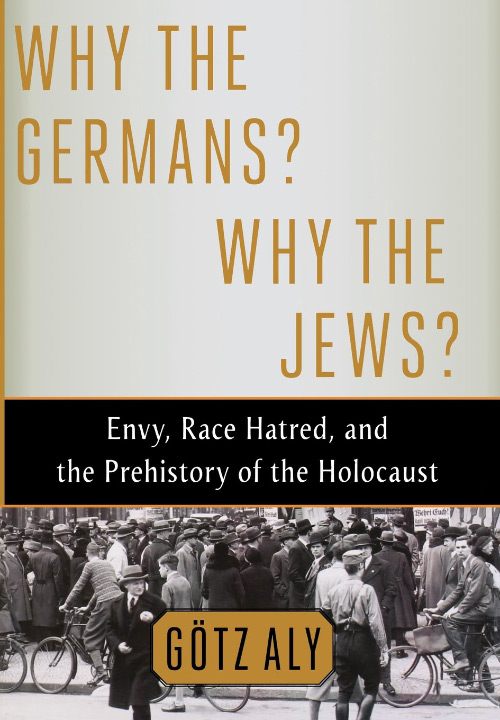 Why the Germans? Why the Jews?: Envy, Race Hatred, and the Prehistory of the Holocaust, by Götz Aly. Metropolitan Books, 2014.
Why the Germans? Why the Jews?: Envy, Race Hatred, and the Prehistory of the Holocaust, by Götz Aly. Metropolitan Books, 2014.
Steven E. Aschheim writes, “[Historian Götz Aly contends that] sheer envy at rapid Jewish economic and cultural success and perceived domination (as opposed to Christian immobility) formed the basis of nineteenth- and early twentieth-century German anti-Semitism. ... Accumulated ressentiment of Jewish achievement and perceived privilege, was gradually rationalized into, and buttressed by, theories of racial superiority. This not only enabled the complicity of a population that profited materially from the expropriation of the Jews but whose ‘massive feelings of inferiority and envy created a new morality that justified wholesale discrimination, larceny, and murder.’ ... Unlike the English, French, and Italians, or the Anglo-Saxon West, Aly argues, the Germans followed their own singular trajectory. Rather than a [classical] liberal conception of individual freedom, they consistently pursued a collectivist reliance on the State and a non-individualistic, ethnic sense of self. ...
“Aly also has interesting things to say about anti-Semitism as a dispossessing mechanism enabling the social mobility of previously thwarted members of the lower classes. Both nineteenth- and twentieth-century anti-Semitism and National Socialism, he argues, were moved by two interrelated central themes: the creation of an ethnically homogenous nation coupled with the ideal of social equality. Anti-Semites of all stripes demanded both economic and political protectionism. Ridding Germany of dominating, divisive Jews, they held, would finally bring about national solidarity.” Michael Blumenthal, director of the Jewish Museum in Berlin, says, “The most important contribution to the massive literature on the subject. Aly’s analysis of a deeply rooted social malady has made the incomprehensible comprehensible.”
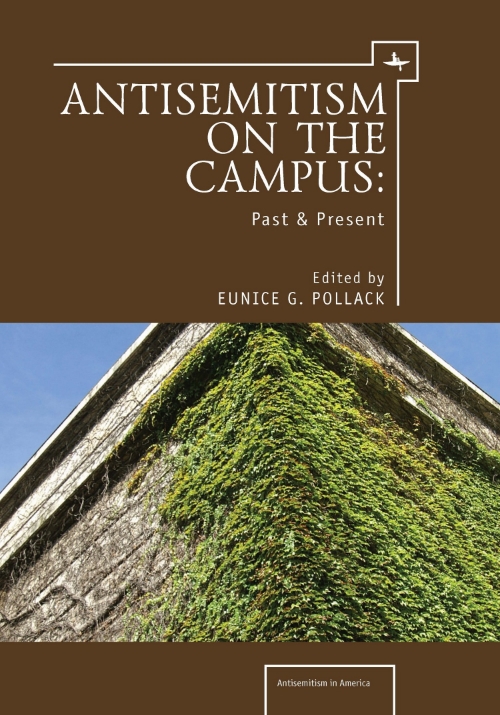 “Why University Administrators Tolerate Antisemitism,” by Benjamin Ginsberg. In Anti-Semitism on the Campus: Past and Present, edited by Eunice G. Pollack. Academic Studies Press, 2010.
“Why University Administrators Tolerate Antisemitism,” by Benjamin Ginsberg. In Anti-Semitism on the Campus: Past and Present, edited by Eunice G. Pollack. Academic Studies Press, 2010.
Ginsberg writes, “[One of reasons for the solicitude shown by administrators toward activists and minority groups] is that this alliance can, in several ways, help administrators to bolster their own power vis-à-vis the faculty. . . . [M]ost professors . . . are generally reluctant to oppose programs and proposals that are presented as efforts to foster campus equality, diversity, multiculturalism, and the like. . . . [U]niversity administrators will often package proposals designed mainly to enhance their own power on campus as altruistic and public-spirited efforts to promote social and political goals, such as equality and diversity, which the faculty cannot oppose.
This tactic can succeed if and only if administrative proposals are endorsed by the school’s political activists, as well as spokespersons for the women’s groups and various racial and ethnic groups. . . . For this reason, administrators view these coalitions of minorities and activists as important allies and frequently work to retain their support with symbolic and material rewards. . . . It almost goes without saying that university administrators ignore the absence of ethnic and ideological diversity in their schools’ Middle East studies programs. Since such programs are usually allied with and supported by the left-liberal campus community, the question of diversity does not apply to them. Much the same story can be told about campus speech and civility codes. . . . The campus Left is willing to declare that even the most blatantly antisemitic activity is actually anti-Zionist. . . . Given a choice between nurturing their own career interests and objecting to antisemitic, oops, anti-Zionist rhetoric, many administrators choose the former.”

